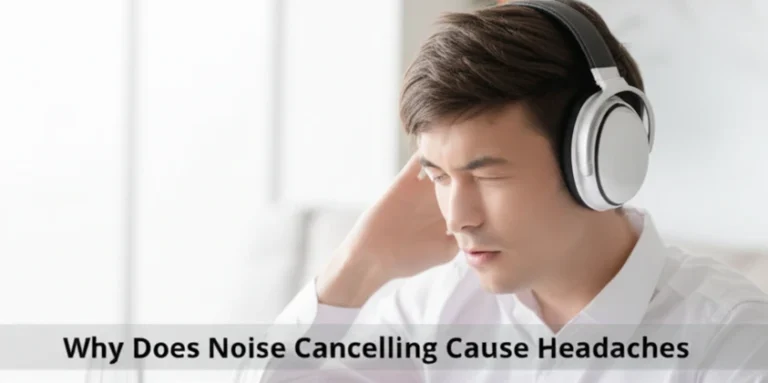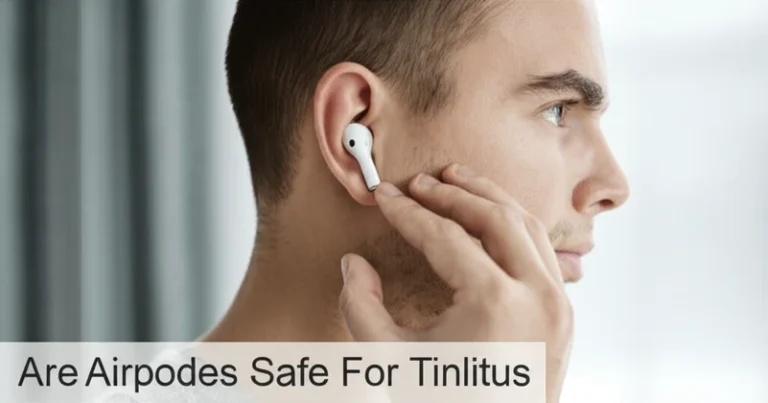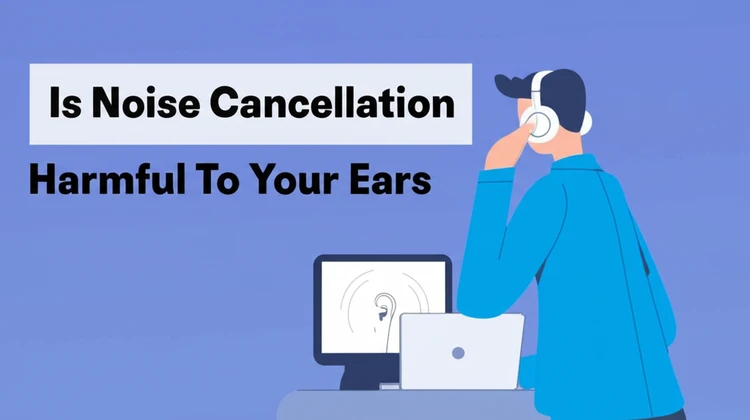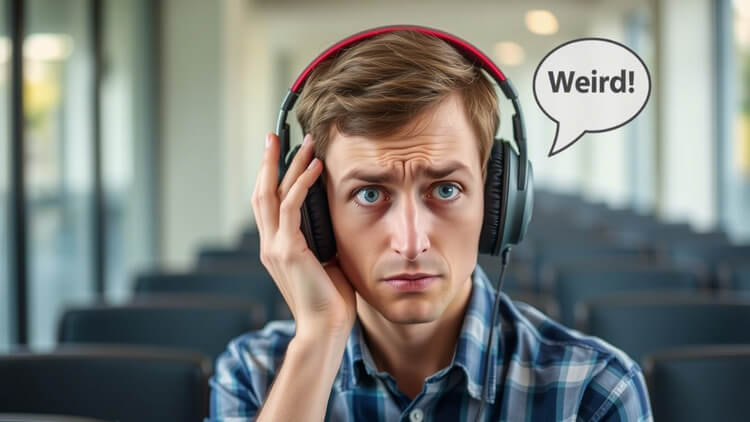
Imagine this: you’re lost in your favorite music, oblivious to the world around you. But what if that blissful escape comes at a cost? Noise-induced hearing loss is a growing concern, and your headphones might be contributing to the problem.
Learning how to choose the safest headphones for your ears is crucial for protecting your long-term hearing health. This comprehensive guide provides expert advice to help you make informed decisions and enjoy your audio without compromising your hearing.
Headphones have become indispensable, weaving their way into our daily lives from work calls and virtual meetings to immersive music experiences and engaging podcasts. However, not all headphones are created equal.
The wrong choice can lead to discomfort, hearing damage, and even permanent hearing loss. Selecting headphones that prioritize safety ensures your listening habits enrich your life, not detract from it. This guide will equip you with the knowledge to understand what makes headphones safe and empower you to choose the best ones for your individual needs.
Why Safety Matters When Choosing Headphones
Hearing Loss Risks
Excessive exposure to loud sounds can cause irreversible hearing loss, specifically noise-induced hearing loss (NIHL).
Prolonged headphone use at high volumes dramatically increases this risk. The World Health Organization (WHO) recommends limiting exposure to sounds above 85 decibels for extended periods. Unfortunately, many individuals unknowingly listen to music at volumes far exceeding safe levels, particularly in noisy environments like bustling commutes or crowded gyms, further exacerbating the risk.
Comfort and Fit
Ill-fitting headphones lead to more than just discomfort.
They can cause persistent earaches, pressure points, and even headaches. This discomfort often leads users to constantly adjust their headphones or abandon them altogether. Moreover, a poor fit can result in increased sound leakage, tempting users to crank up the volume to compensate, thereby increasing the risk of hearing damage.
Finding the right fit is therefore crucial for both comfort and hearing safety.
Growing Awareness
With a concerning rise in hearing issues among younger generations, awareness about safe listening practices has grown significantly. Studies indicate a correlation between increased headphone use and hearing loss in adolescents and young adults. This heightened awareness has prompted manufacturers to design headphones with integrated safety features, addressing this growing concern and offering users more choices for protecting their hearing.
Features That Make Headphones Safe
Volume Limiting Technology
Headphones with built-in volume-limiting features cap the maximum output, preventing users from exceeding safe listening levels.
These features are especially beneficial for children and individuals with sensitive hearing. While most volume-limiting headphones restrict sound levels to 85 decibels or lower, some advanced models offer customizable limits, allowing users to tailor the settings to their specific needs and preferences.
Noise Cancellation
Noise-cancelling headphones mitigate ambient noise, enabling users to enjoy their audio at lower volumes without external distractions. There are two primary types: Active Noise Cancelling (ANC) and Passive Noise Isolation.
ANC employs microphones to detect and neutralize external sounds by generating opposing sound waves. This technology is highly effective in reducing consistent low-frequency noise, such as airplane engine hum or traffic rumble. Passive noise isolation, on the other hand, relies on the physical design of the headphones, like padded earcups or snug-fitting ear tips, to create a barrier against external noise.
Open-Back vs.
Closed-Back Design
Open-back headphones feature grilles or perforations that allow air to flow through the earcups. This design minimizes ear pressure and provides a more spacious, natural soundstage. However, open-back headphones also allow sound to leak in and out, which can be distracting in noisy environments and may lead users to increase the volume.
Closed-back headphones, in contrast, have a sealed earcup design that provides superior noise isolation and minimizes sound leakage. While this design enhances the listening experience in noisy environments, it can also increase ear fatigue during extended listening sessions due to the increased pressure and heat buildup.
Ergonomic Design
Ergonomic design plays a vital role in headphone safety and comfort. Lightweight construction reduces strain during prolonged use, preventing neck and head aches.
Adjustable headbands and earcups ensure a secure and comfortable fit, minimizing pressure points and promoting long-term listening comfort.
Best Types of Safe Headphones for Your Ears
Over-Ear Headphones
Over-ear headphones encompass the ears entirely, providing excellent sound quality and even pressure distribution. Many models feature advanced ANC technology, effectively reducing ambient noise, and large drivers that deliver clear, balanced sound. Examples include the Bose QuietComfort 45, known for its exceptional noise cancellation, and the Sennheiser HD 660 S, prized for its open-back design and detailed audio reproduction.
In-Ear Monitors (IEMs)
IEMs fit snugly within the ear canal, offering superior noise isolation and a highly detailed sound.
However, due to their proximity to the eardrum, they must be used at moderate volumes to avoid potential hearing damage. IEMs are often favored by musicians and audiophiles for their precise audio reproduction and portability. Models like the Shure SE215 and Etymotic ER2XR offer excellent sound quality and noise isolation.
Bone Conduction Headphones
Bone conduction headphones transmit sound through the cheekbones, bypassing the ear canal entirely.
This unique technology makes them particularly suitable for individuals with hearing sensitivities or those who require situational awareness, such as runners or cyclists. Shokz (formerly AfterShokz) is a leading brand in bone conduction technology, with models like the OpenRun Pro offering a safe and effective way to enjoy audio while maintaining awareness of your surroundings.
Wireless vs. Wired Options
Wireless headphones provide freedom of movement and eliminate the risk of tangling wires.
While concerns about Bluetooth radiation exist, studies from reputable sources have shown minimal risk with low-power devices. Wired headphones eliminate concerns about battery life and potential connectivity issues, and offer consistent audio quality. Some users also prefer wired options due to perceived sound quality advantages.
Brands Known for Safe Headphones
Bose
Bose is renowned for its industry-leading ANC technology, consistently delivering exceptional noise reduction in its headphones.
Their designs are known for comfort, making them suitable for extended listening sessions. The QuietComfort series, particularly the QC45 and QC35 II, are popular choices for their effective ANC and comfortable fit. However, Bose headphones tend to prioritize comfort over a perfectly neutral sound signature, so audiophiles seeking a flatter frequency response might prefer other brands.
Sony
Sony offers headphones with adjustable volume controls and customizable ANC settings, allowing users to personalize their listening experience.
They focus on delivering balanced audio output suitable for various music genres. The WH-1000XM5 is highly regarded for its excellent noise cancellation, detailed sound quality, and comfortable design. Sony also offers a wide range of other headphones catering to different budgets and needs.
Jabra
Jabra specializes in lightweight, ergonomic designs for all-day comfort.
Their focus on workplace solutions incorporates features like noise isolation and clear microphone quality for optimal communication. The Jabra Evolve series and the Elite range offer a variety of options for professionals and everyday users seeking comfortable and functional headphones.
Puro Sound Labs
Puro Sound Labs dedicates its focus to volume-limiting headphones designed specifically for children, ensuring safe listening levels for young ears. Their headphones feature consistent volume capping, typically at 85dB, to protect developing auditory systems.
Models like the BT2200s and PuroQuiet offer safe and engaging listening experiences for children.
Tips for Using Headphones Safely
Monitor Listening Volume
Utilize smartphone apps or built-in operating system features to track and limit decibel levels. Adhere to the 60/60 rule: Listen at no more than 60% volume for a maximum of 60 minutes at a time. Taking regular breaks allows your ears to recover and minimizes the risk of hearing damage.
Consider using a decibel meter app to measure the sound levels in your environment and adjust your headphone volume accordingly. Be mindful of the volume when using headphones in noisy environments; it’s easy to unknowingly exceed safe listening levels.
Take Listening Breaks
Rest your ears for at least five minutes every hour of headphone use. This short break allows your ears to recover from sound exposure and reduces ear fatigue.
During your breaks, avoid other loud sounds to maximize the recovery period.
Optimize Fit and Hygiene
Select headphones with adjustable bands and interchangeable ear tips to achieve the most secure and comfortable fit. Clean ear tips and earcups regularly with a damp cloth and mild soap to prevent bacterial buildup and maintain hygiene.
Use Noise-Cancelling Features Effectively
Enable ANC in noisy environments like airplanes or busy streets to avoid the temptation of increasing the volume. In quieter settings, opt for passive noise isolation or disable ANC to conserve battery life and enjoy a more natural listening experience.
Alternatives to Headphones for Safe Listening
External Speakers
External speakers provide immersive sound without directly exposing your ears to soundwaves.
They are best suited for private or home use where disturbing others isn’t a concern. High-quality speakers can offer a rich and detailed sound experience without the potential risks associated with in-ear or over-ear headphones. However, they are not portable and lack the privacy afforded by headphones.
Personal Sound Amplifiers
Personal sound amplifiers enhance sound clarity at lower volumes, making them beneficial for individuals with mild hearing difficulties.
They amplify specific frequencies to improve speech intelligibility without requiring high volume levels. However, they are not designed for music listening and may not be suitable for individuals with significant hearing loss.
FAQ
What Are the Safest Headphones for Kids?
Volume-limiting headphones from brands like Puro Sound Labs are specifically engineered for children, capping sound levels at 85 decibels to protect their sensitive hearing.
Are Wireless Headphones Safe?
Yes, wireless headphones are generally considered safe when used responsibly. While concerns about Bluetooth radiation persist, studies from reputable organizations have indicated minimal risk with low-power Bluetooth devices like headphones.
However, it’s essential to maintain moderate listening volumes and take regular listening breaks to minimize any potential risks.
Do Noise-Cancelling Headphones Prevent Hearing Damage?
Noise-cancelling headphones can help reduce the need for high volumes in noisy environments, thereby indirectly contributing to hearing protection. However, they must still be used responsibly at safe volume levels. ANC doesn’t eliminate all sound, and excessive volume, even with noise cancellation, can still damage hearing.
Conclusion
Choosing the safest headphones for your ears involves careful consideration of features like volume limiting, ergonomic design, and noise cancellation technologies.
Understanding the different headphone types, prioritizing a comfortable fit, and adopting safe listening practices are crucial for protecting your hearing health. By making informed decisions and using your headphones responsibly, you can enjoy a rich and immersive audio experience without compromising your long-term hearing. Explore the resources available online and consult with audiologists or hearing healthcare professionals for personalized advice tailored to your individual needs.






